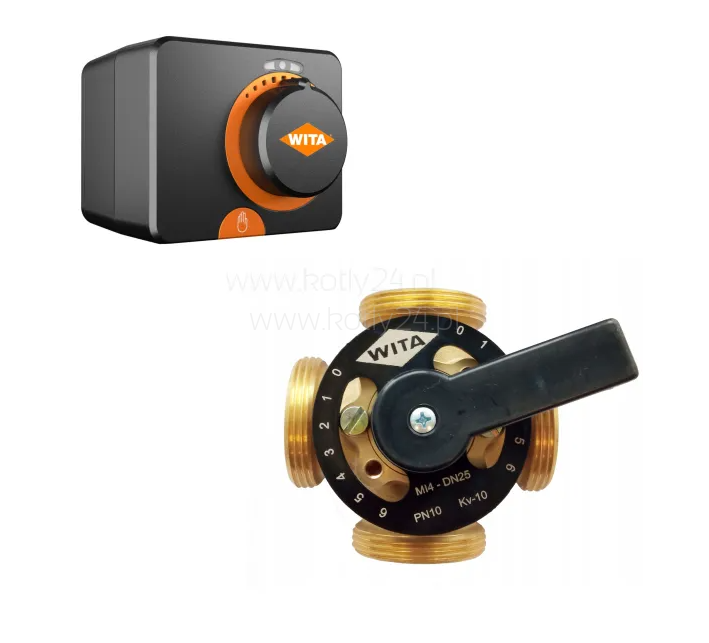
The four-way valve is a key element in central heating systems, which allows both mixing liquids in different proportions and switching circuits. It consists of four ports and an adjustable internal element, which allows for precise adjustment of the device's operation. It is often used in heating systems powered by solid fuel boilers.
Why is the four-way valve important? Operation of solid fuel boilers generates acidic condensates which can lead to low temperature corrosion. Therefore, in order to protect the system, the technique of "reheating" the water returning to the boiler from the radiators is used. The four-way valve allows you to create two circuits - one for the radiators and the other for the boiler, where the water is heated. Adjustable stirrer, allowing the temperature to be set from 0 to 90 ° C, makes the water hot enough that low temperature corrosion is not a problem.
Four-way and three-way valves are both used as corrosion protection mechanisms and for temperature control in heating systems. Three-way valves are more suitable for systems with thermostatic heads on radiators, while four-way valves are used with conventional regulators.
The four-way valve is also used in systems with hot utility water (DHW). In winter, it can heat the radiators and heat the water at the same time. In the summer, it can be moved so that all heated water is directed only to the hot water tank.
How to choose the right valve? Brass 4-way valves are recommended for open systems. Cast iron valves can be used in closed systems, but they are generally less durable. The diameter of the valve should be matched to the diameter of the pump and the boiler power, which facilitates selection based on the nominal size of the valve DN. For example, for an 18 kW boiler, a DN25 valve will be suitable, and for a 40 kW boiler - DN32 or DN40.
When it comes to the assembly and installation of the four-way valve, it is important to follow the recommendations of the boiler and heating system manufacturer, especially when it comes to maintaining the warranty on the device. Some manufacturers require a specific type of valve to be fitted for optimum performance and safety.
Moreover, it is worth paying attention to the position of the circulation pump in the installation. Depending on the specific case, the pump can be installed on the supply or return from the system to the valve. Choosing the right location has a significant impact on the energy efficiency and operation of the system.
If savings are an issue, consider installing a programmable and remotely managed controller, which can further reduce running costs. These controllers can automatically adjust the valve operation depending on changing conditions, such as outdoor temperature or heating system load, which means higher efficiency and lower heating bills.
If the heating system is complex and includes different types of circuits and devices, such as water heaters, underfloor heating or even solar systems, four-way valves can be part of a larger, integrated control network that ensures maximum efficiency and comfort.
In conclusion, the four-way valve is a versatile and essential element in a variety of heating systems. Thanks to its use, it is possible not only to effectively manage the temperature and water circuits in the installation, but also to protect the system against low-temperature corrosion. When choosing a valve, it is worth paying attention to several aspects, such as the type of system, manufacturer's requirements and application specifics to ensure long and trouble-free operation.